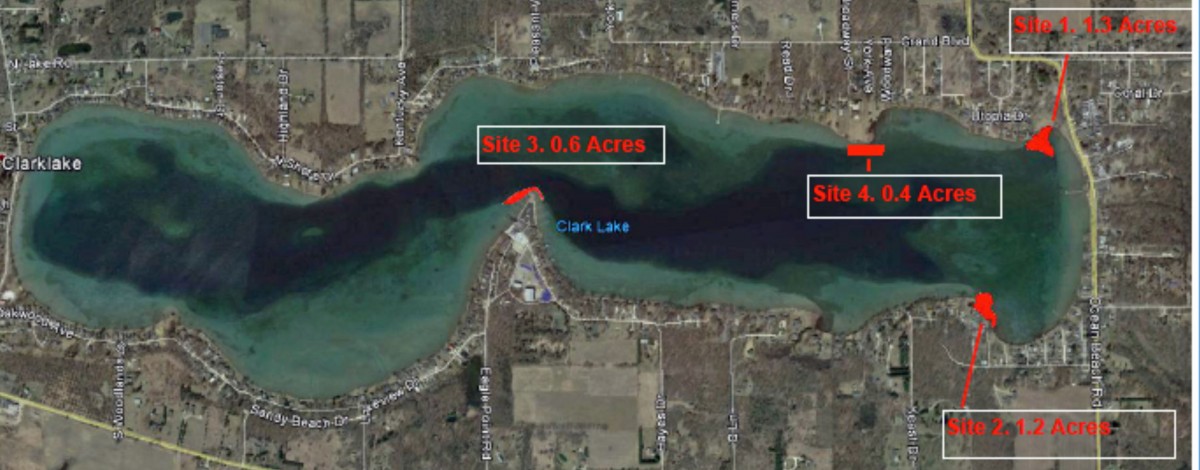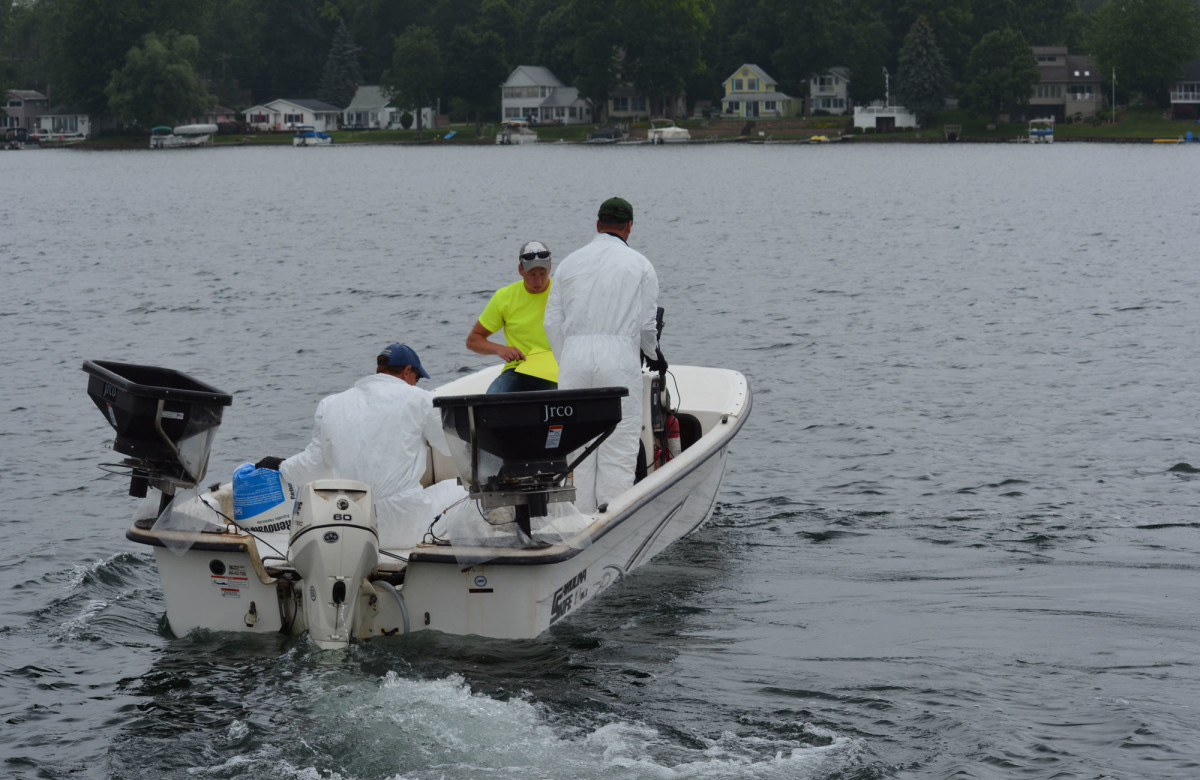 Tuesday (10/6) offered good weather conditions for the fall AVAS weed survey. This was an important step to ensure that colonies of hybrid Eurasian water milfoil (HEWM) are found and can be targeted for treatment in the spring. If at the lake on Tuesday, you might have seen the PLM boat raking up weed samples for analysis. The results of this survey aren’t known yet. When available, it will be reported on this website.
Tuesday (10/6) offered good weather conditions for the fall AVAS weed survey. This was an important step to ensure that colonies of hybrid Eurasian water milfoil (HEWM) are found and can be targeted for treatment in the spring. If at the lake on Tuesday, you might have seen the PLM boat raking up weed samples for analysis. The results of this survey aren’t known yet. When available, it will be reported on this website.
So where does this project stand? During the summer, four acres were treated by DEQ permit and with permission of property owners holding riparian rights. Professional applicators conducted the treatment June 18th. The four acres treated were only a fraction of the 20 acres found in the lake based on a survey in fall 2014. As a result of a petition drive, Columbia Township trustees voted unanimously to create a special assessment district (SAD) that will allow treatment of this invasive species wherever found in the lake and also support the cost of treatment. Lakefront property owners are being assessed $64.42 per year. Immediate payment is an option. But since that amount is added to the winter property tax bill, property owners can wait to pay it with their taxes.
The cost of the survey this fall is supported by contributions to the Clark Lake Spirit Foundation. The information gleaned will add to the effectiveness of treatment in 2016.
Some have asked “how effective was the privately financed treatment this summer?” Without the detailed results of the survey taken Tuesday, there are only initial spot checks that suggests the results were “moderately effective.” What was learned from this summer’s treatment? Two issues influenced it. First, only four of the known 20 acres were treated. HEWM is known to propagate wildly. When props cut off the tops of plants, those cuttings can float to other locations and establish dense, new colonies thus expanding the HEWM population. Second, the calcium in Clark Lake’s water encouraged a coating to develop around some of the plants that protected them from the action of the herbicide. The plants matured more slowly in 2015 than is typical. That made timing difficult. There is fine needle to thread. The plants must still be actively growing, but treatments must take place before they become coated. The applicator intends to treat earlier in 2016.
Another question is “how long after treatment can the herbicide be found in the water?” When applied, the granules sink to the bottom where the plants absorb it. Within a matter of a few days, the presence of treatment in the water is negligible. There is a 24-hour swim restriction within 100 feet of the treated areas. The Invasive Species Committee takes a pro-active approach. They insisted on taking water samples both before and after treatment to test for traces of the operative herbicide in order to ensure the lake has returned to its original state. Ironically, the test before treatment showed more of the herbicide in the water than the trace found afterwards. What would cause this counter-intuitive outcome? One explanation is that the runoff from lawns and fields during a rainy June contributed. Lakefront property owners may have used the same herbicide to treat their lawns as was used to treat the weeds in the lake. The trace amounts in the runoff were not sufficient enough to affect the HEWM.
Before proceeding with the petition drive, the Clark Lake Invasive Species Committee thoroughly researched what the invasion of HEWM in Clark Lake could mean to the future of the lake. They found that where HEWM is unchecked, its density curtails recreational use of lakes, destroys wildlife habitat, and reduces property values. The committee believes that the SAD program is an effective measure that will control HEWM and preserve Clark Lake in the way we’ve always known it.












